A New Triangulation Algorithm for Positioning Space Debris
Abstract
1. Introduction
2. Methods
2.1. Triangulation Algorithm
| Algorithm 1. Summary of the proposed triangulation algorithm |
| Input: The two EO sensor positions and ; The two EO sensors’ observation RMS errors ,, and ; The simultaneous optical measurements . Output: Space debris position . 1: Compute and from Equations (8) and (9). 2: Compute and from Equations (10) and (11). 1: Compute from Equation (15). |
2.2. Positioning Error
3. Simulation Procedure
- Based on optical measurements from Jilin Space Tracking Base of Changchun Observatory, precise orbit determination (POD) is performed on the selected LEO space debris to obtain their precise ephemeris;
- Based on the ephemeris obtained in step 1, the simultaneous observation arc consists of a series of consecutive simultaneous RADEC pseudo-measurements generated for the two simulation observation sites, and each RADEC pseudo-measurement is corrupted with Gaussian noise of 9″. The length and sampling interval of the simultaneous observation arc are set at 30 s and 1 s, respectively. In addition, the detection constraints are also considered in the simulation, including the visibility of space debris to the observation sites, but not the EO sensors’ performance and weather conditions;
- Based on the simultaneous RADEC pseudo-measurements obtained in step 2, the space debris position can be calculated by the proposed triangulation algorithm and two traditional triangulation algorithms, respectively. The positioning results are compared with the ephemeris, and the RMS position errors of the above three triangulation algorithms are evaluated;
- The initial orbit of selected LEO space debris is calculated using the obtained positioning results in step 3, the initial orbit results are compared with the reference orbit obtained in step 1, and IOD errors are evaluated. Due to the length of the detection arc, the Herrick–Gibbs method and differential correction are used in IOD processes [28].
4. Results
5. Discussion
6. Conclusions
Author Contributions
Funding
Institutional Review Board Statement
Informed Consent Statement
Data Availability Statement
Acknowledgments
Conflicts of Interest
References
- Space Debris by the Numbers. Available online: http://www.esa.int/Safety_Security/Space_Debris/Space_debris_by_the_numbers (accessed on 1 September 2021).
- Donald, J.K.; Burton, G.C. Collision Frequency of Artificial Satellites: Creation of a Debris Belt. J. Geophys. Res. 1987, 83, 2637. [Google Scholar]
- Heiner, K. Space Debris–Models and Risk Analysis, 1st ed.; Springer: Berlin, Germany, 2006; pp. 5–17. [Google Scholar]
- Lee, E.; Park, S.Y.; Hwang, H.; Choi, J.; Cho, S.; Jo, J.H. Initial orbit association and long-term orbit prediction for low earth space debris using optical tracking data. Acta Astronaut. 2020, 176, 247–261. [Google Scholar] [CrossRef]
- Schildknecht, T.; Ploner, M.; Hugentobler, U. The search for debris in GEO. Adv. Space Res. 2001, 28, 1291–1299. [Google Scholar] [CrossRef]
- Schildknecht, T.; Musci, R.; Ploner, M. Optical observations of space debris in GEO and in highly-eccentric orbits. Adv. Space Res. 2004, 34, 901–911. [Google Scholar] [CrossRef]
- Schildknecht, T. Optical surveys for space debris. Astron. Astrophys. Rev. 2007, 14, 41–111. [Google Scholar] [CrossRef]
- Schildknecht, T.; Ploner, M. Optical observations of space debris with the Zimmerwald 1-meter telescope. Adv. Space Res. 1997, 19, 221–228. [Google Scholar] [CrossRef]
- Seitzer, P.; Smith, R.; Africano, J.L. MODEST observations of space debris at geosynchronous orbit. Adv. Space Res. 2004, 34, 1139–1142. [Google Scholar] [CrossRef]
- Silha, J.; Schildknecht, T.; Hinze, A. An optical survey for space debris on highly eccentric and inclined MEO orbits. Adv. Space Res. 2017, 59, 181–192. [Google Scholar] [CrossRef][Green Version]
- Musci, R.; Schildknecht, T.; Ploner, M. Orbit improvement for GTO objects using follow-up observations. Adv. Space Res. 2005, 35, 1236–1242. [Google Scholar] [CrossRef]
- Rykhlova, L.V.; Bagrov, A.V.; Barabanov, S.I. Search and observations of Space Debris and near Earth objects at INASAN. Adv. Space Res. 2001, 28, 1301–1307. [Google Scholar] [CrossRef]
- Molotov, I.; Agapov, V.; Titenko, V. International scientific optical network for space debris research. Adv. Space Res. 2008, 41, 1022–1028. [Google Scholar] [CrossRef]
- Alby, F.; Boer, M.; Deguine, B. Status of CNES optical observations of space debris in geostationary orbit. Adv. Space Res. 2004, 34, 1143–1149. [Google Scholar] [CrossRef]
- Porfilio, M.; Piergentili, F.; Graziani, F. First optical space debris detection campaign in Italy. Adv. Space Res. 2004, 34, 921–926. [Google Scholar] [CrossRef]
- Hebert, T.J.; Africano, L.J. Optical observations of the orbital debris environment at NASA. Adv. Space Res. 2001, 28, 1283–1290. [Google Scholar] [CrossRef]
- Pier, J.R.; Munn, J.A. Astrometric Calibration of the Sloan Digital Sky Survey. Astron. J. 2003, 125, 1559–1579. [Google Scholar] [CrossRef]
- Bernard, A.J.; Nafi, A.M.; Geller, D. Using Triangulation in Optical Orbit Determination. In Proceedings of the AAS/AIAA Astrodynamics Specialist Conference, Snowbird, UT, USA, 19–23 August 2018. [Google Scholar]
- Hartley, R.I.; Sturm, P. Triangulation. Comput. Vis. Image Underst. 1995, 68, 146–157. [Google Scholar] [CrossRef]
- Yanagisawa, T.; Kurosaki, H. Ground-based optical observation system for LEO objects. Adv. Space Res. 2015, 56, 414–420. [Google Scholar] [CrossRef]
- Lloyd, K.H. Concise Method for Photogrammetry of Objects in the Sky; WRE-TN-72; Weapons Research Establishment: Salisbury, Australia, 1971; pp. 6–8. [Google Scholar]
- Powers, J.W. Range Trilateration Error Analysis. IEEE Trans. Aerosp. Electron. Syst. 1966, AES-2, 572–585. [Google Scholar] [CrossRef]
- Long, S.A.T. Analytical Expressions for Position Error in Triangulation Solution of Point in Space for Several Station Configurations. 1974. Available online: https://ntrs.nasa.gov/archive/nasa/casi.ntrs.nasa.gov/19740020173.pdf (accessed on 30 November 2021).
- Sharma, J. Space-based visible space surveillance performance. J. Guid. Control. Dyn. 2000, 23, 153–158. [Google Scholar] [CrossRef]
- Lei, X.; Wang, K.; Zhang, P. A geometrical approach to association of space-based very short-arc LEO tracks. Adv. Space Res. 2018, 62, 542–553. [Google Scholar] [CrossRef]
- Lei, X.; Li, Z.; Du, J.; Sang, J.; Chen, J.; Liu, C. Identification of uncatalogued LEO space debris by a ground-based EO array. Adv. Space Res. 2020, 67, 350–359. [Google Scholar] [CrossRef]
- Choi, J.; Li, Z.; Choi, Y.J. Two-Site Optical Observation and Initial Orbit Determination for Geostationary Earth Orbit Satellites. J. Astron. Space Sci. 2010, 67, 337–343. [Google Scholar] [CrossRef]
- Vallado, D.A. Fundamentals of Astrodynamics and Applications, 4th ed.; Microcosm Press: Hawthrone, CA, USA, 2013; pp. 457–463. [Google Scholar]
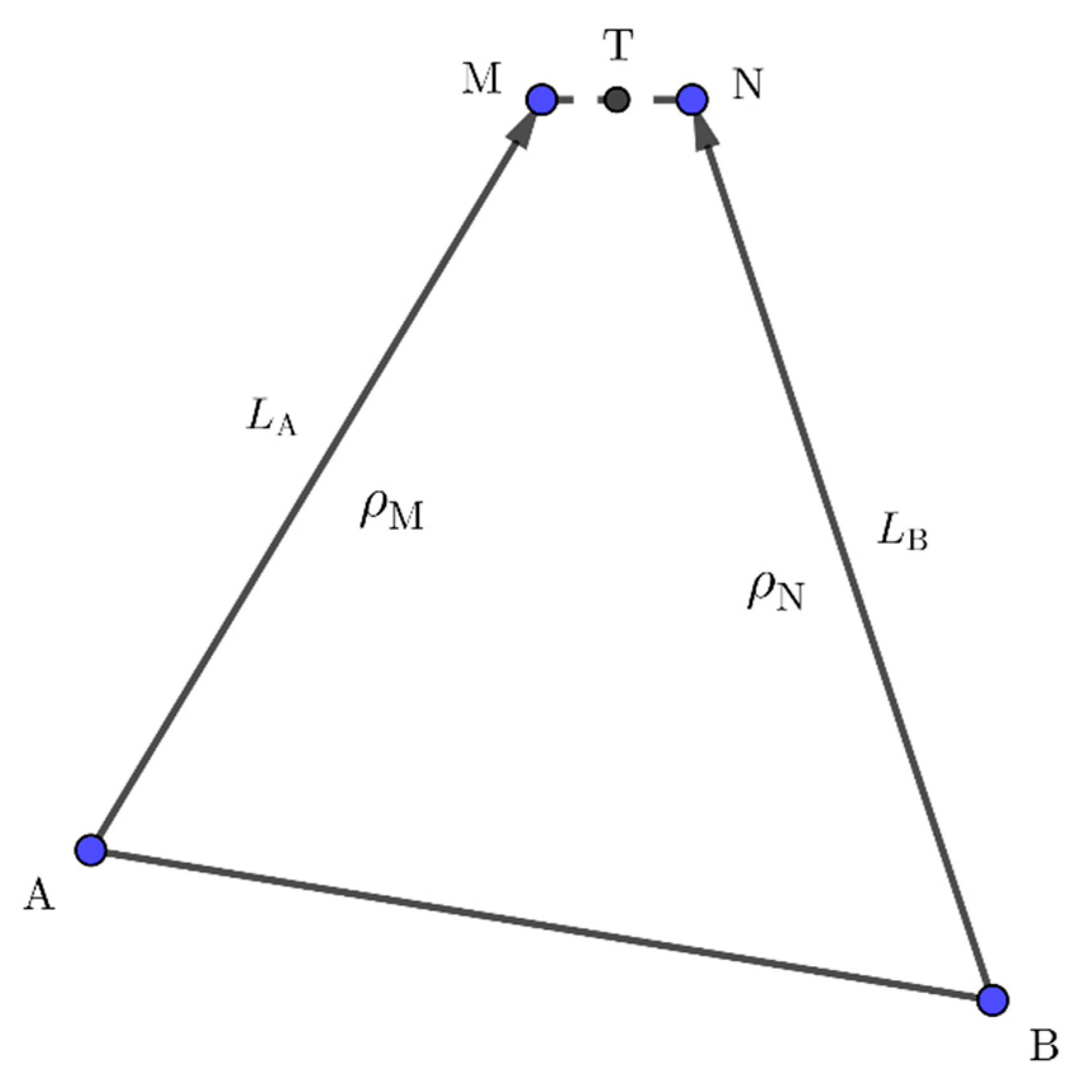

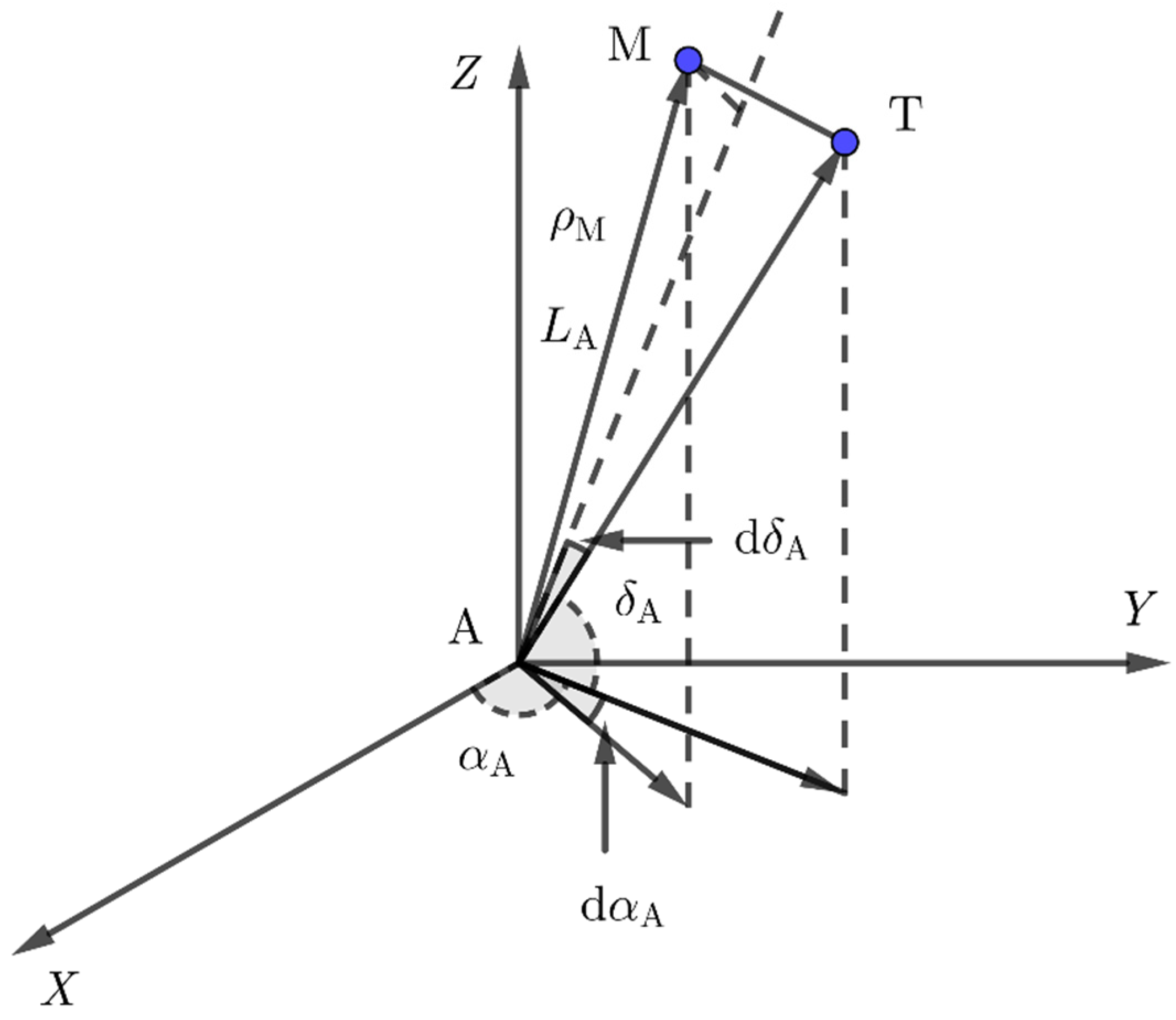
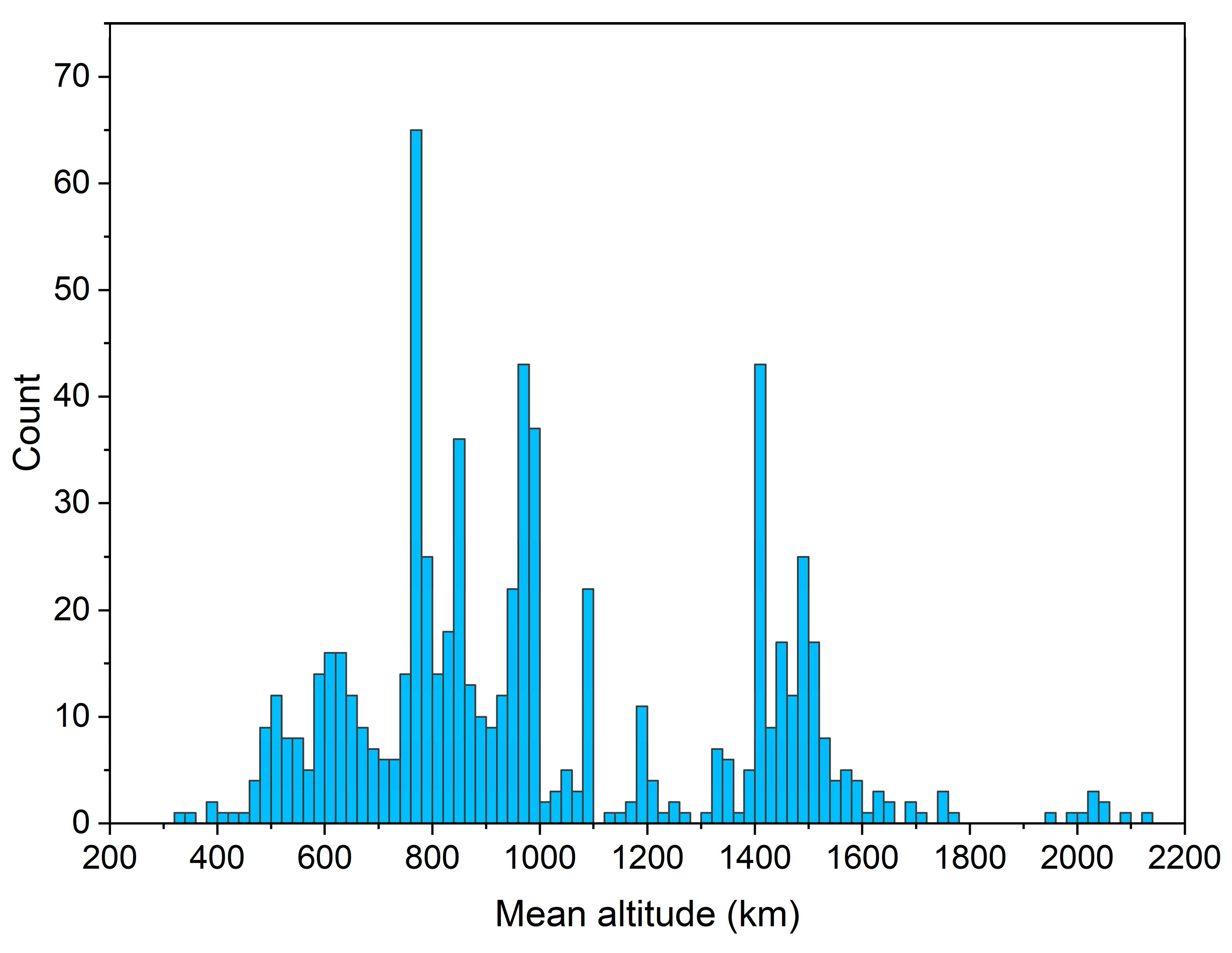
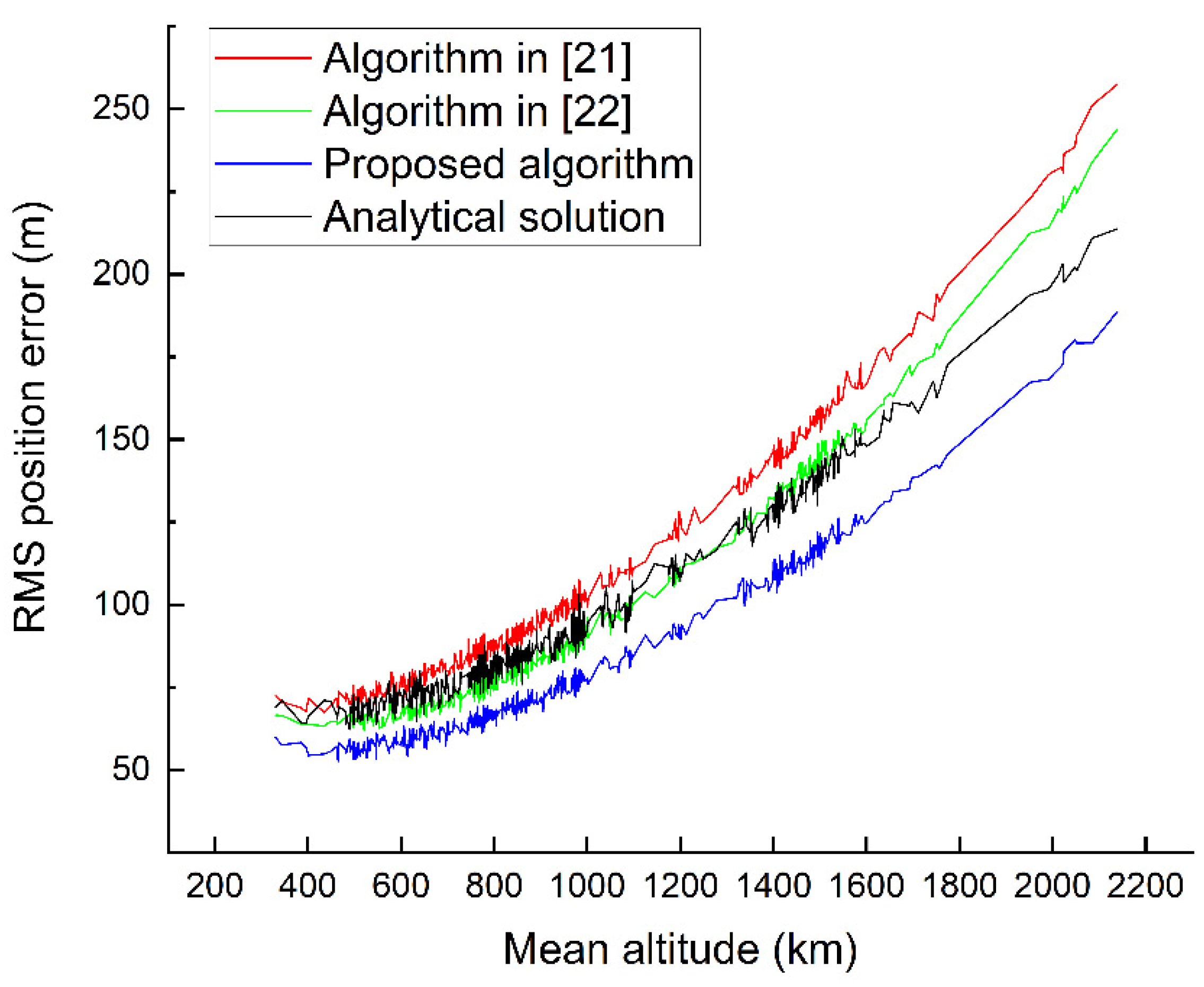

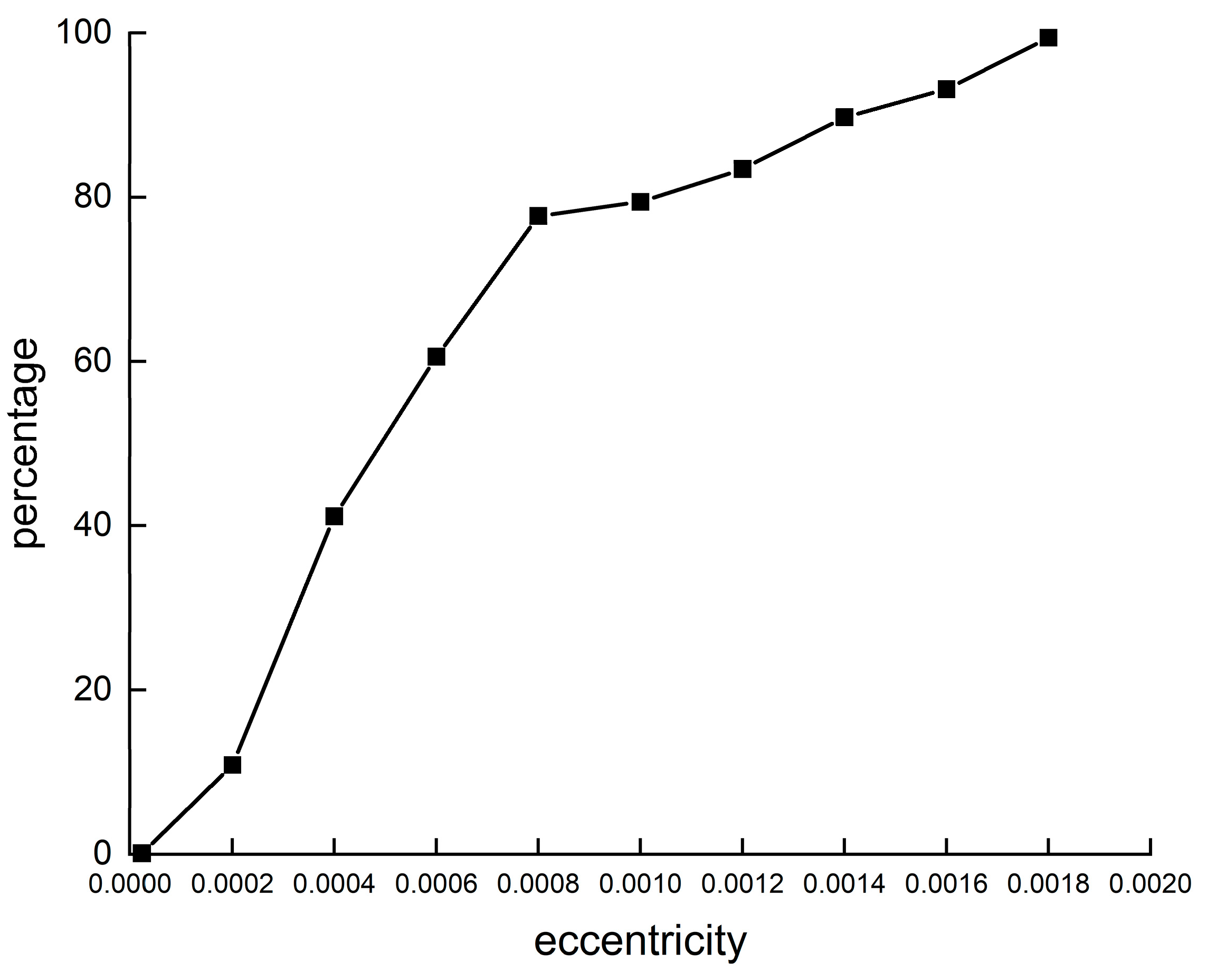
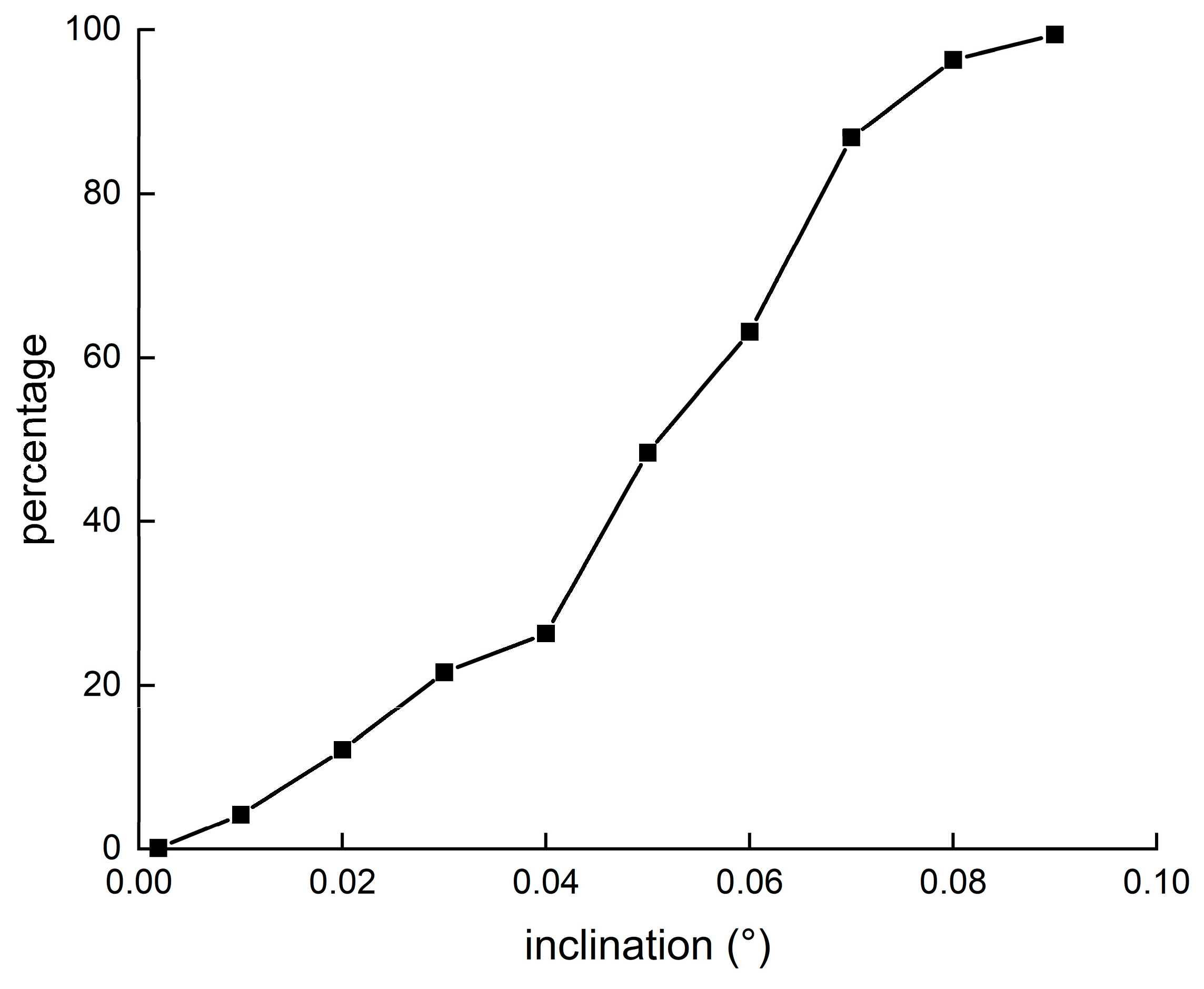
Publisher’s Note: MDPI stays neutral with regard to jurisdictional claims in published maps and institutional affiliations. |
© 2021 by the authors. Licensee MDPI, Basel, Switzerland. This article is an open access article distributed under the terms and conditions of the Creative Commons Attribution (CC BY) license (https://creativecommons.org/licenses/by/4.0/).
Share and Cite
Chen, L.; Liu, C.; Li, Z.; Kang, Z. A New Triangulation Algorithm for Positioning Space Debris. Remote Sens. 2021, 13, 4878. https://doi.org/10.3390/rs13234878
Chen L, Liu C, Li Z, Kang Z. A New Triangulation Algorithm for Positioning Space Debris. Remote Sensing. 2021; 13(23):4878. https://doi.org/10.3390/rs13234878
Chicago/Turabian StyleChen, Long, Chengzhi Liu, Zhenwei Li, and Zhe Kang. 2021. "A New Triangulation Algorithm for Positioning Space Debris" Remote Sensing 13, no. 23: 4878. https://doi.org/10.3390/rs13234878
APA StyleChen, L., Liu, C., Li, Z., & Kang, Z. (2021). A New Triangulation Algorithm for Positioning Space Debris. Remote Sensing, 13(23), 4878. https://doi.org/10.3390/rs13234878





